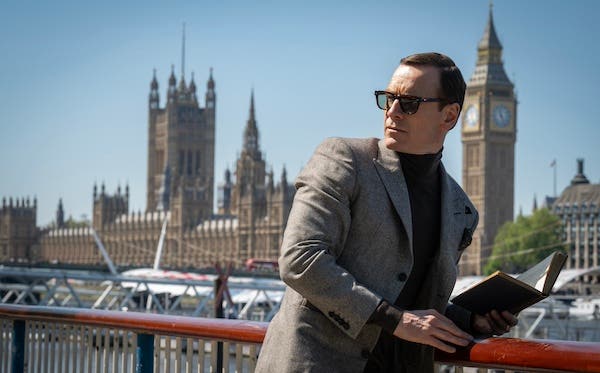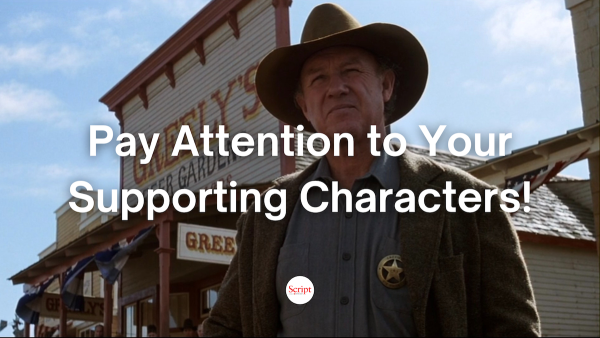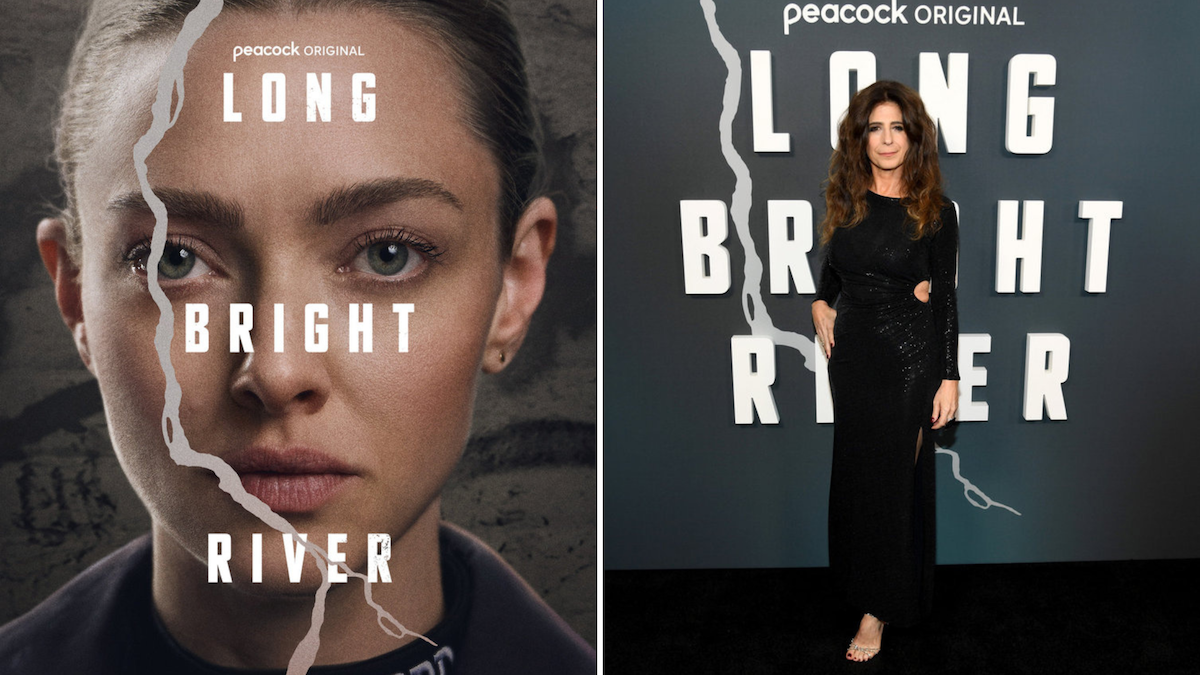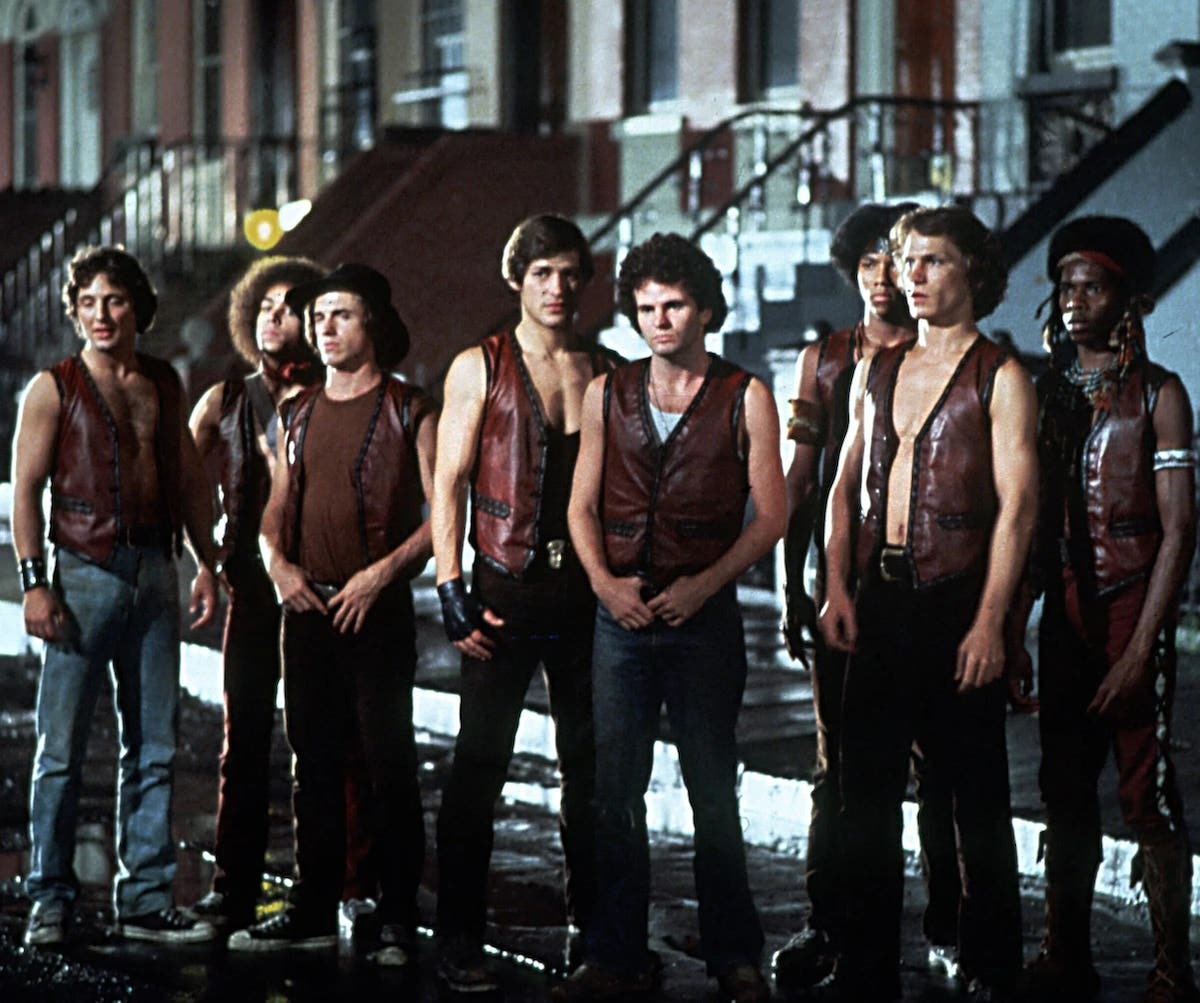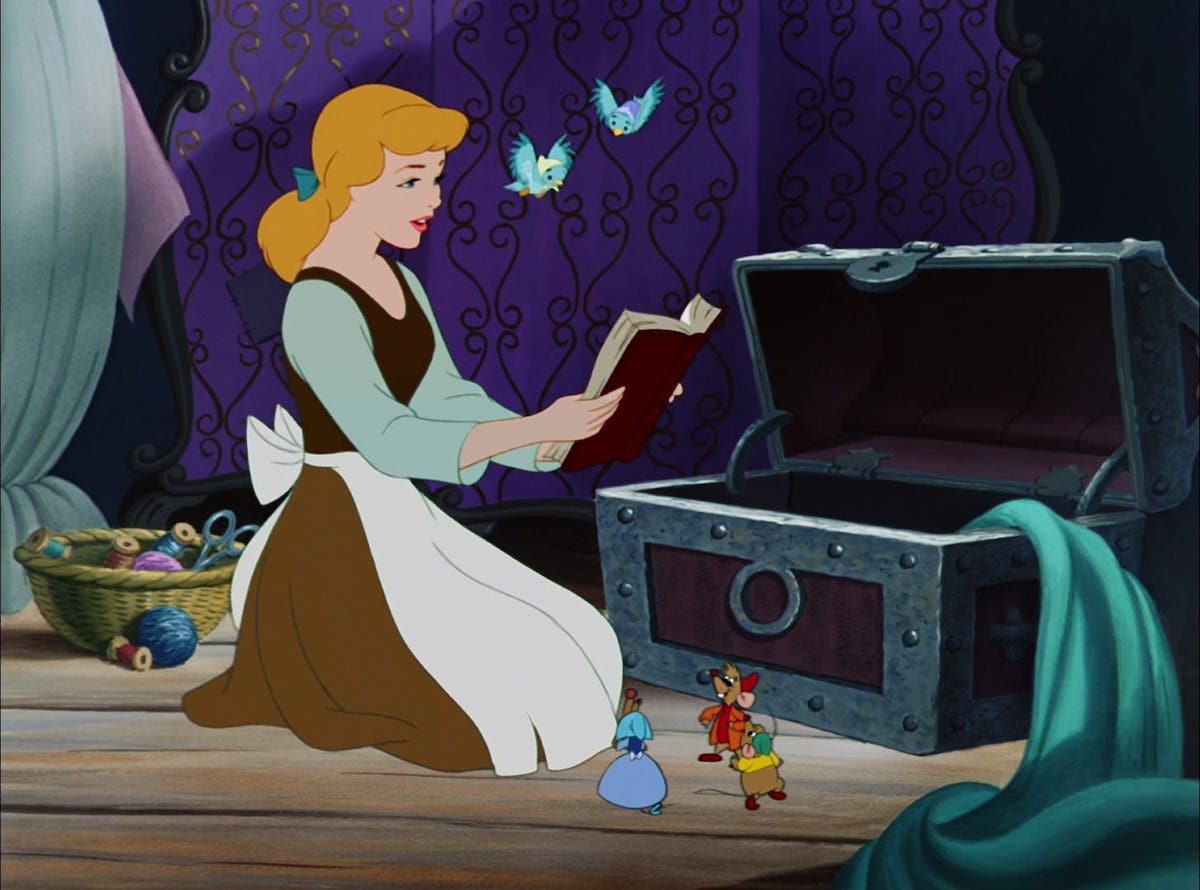CRAFT: Tips for Writing Movie Sex Scenes
Bob Verini gives pointers on how to write movie sex scenes, using excerpts from well-written sex scenes to demonstrate a writer’s options.
Bob Verini is the Los Angeles-based theater critic for Daily Variety, for whom he also contributes features on film, theater and television. Since 2000 he has been a senior writer for Script. Follow Bob on Twitter: @BobVerini.
"It took me three hours ... but, you see, when it was over, I had really done something—something worthwhile— something only I could have done. Who else would have cared enough to do it right?”
There’s a true artist speaking, by golly! You can imagine Cole Porter uttering these words upon finishing the lyrics for “You’re The Top,” or Richard Avedon after printing his Marilyn Monroe portrait. (Actually it’s American Gigolo’s Julian Kaye explaining how he was able to give an older woman, “somebody’s mother,” her first orgasm in 10 years. But, hey! Artistry is where you find it.)
In any event, it’s difficult, if not impossible, to imagine anyone’s expressing this kind of pride of craftsmanship about the writing of a movie sex scene. Far from “something worthwhile,” it may be the most thankless and least-respected screenwriting chore of them all, with a variety of reasons why this is so.
For one thing, the specifics of a sex scene are often little more than a road map: Make a left at that fork, spin around the cul-de-sac and then take the straight route up the highway. And no matter how you approach it, there’s a nagging sense that you, or someone, has been there before. How different can sex be, anyway? Some writers are probably held back by a puritanical streak while others may be frustrated because the full orgasmic experience can’t be depicted outside of XXX video. (Journalist Neil Fulwood observes that hardcore-porn stories like Boogie Nights and Body Double always see to it that their characters climax while still coupling so as to avoid what, in all reality, would be the very visible “money shot.”)
The real problem is that the writer is surely the least important part of the sex scene as it will appear in the finished film since the principals—the director, the actors and the D.P.—will be all too ready to throw out the blueprint and just see what happens on the set. One of the most famous of all sex scenes, that of Julie Christieand Donald Sutherland in Don’t Look Now, never appeared in the script. Total improvisation. Larry Kramer never scripted the Alan Bates/Oliver Reed nude wrestling in Women in Love, either. Instead, he inserted D.H. Lawrence’s original text both to appease censors and to reassure Reed, already nervous about how in the staging he would, um, stack up against his co-star. (Evidently Bates won that battle as well as the wrestling.)
Small wonder that writers tend to be embarrassed about their sex sequences and rarely discuss them in interviews. Script Magazine approached three screenwriters to talk sex; and all declined; one was quoted by a representative as saying, “I just don’t want to talk about those scenes.” Yet, there may be more potential for ownership here than at first glance. A clever screenwriter can influence the tone, length, rhythm and shape of an explicit sequence and even bring some artistry to it.
The first step is to decide why to include a sex scene in the first place. After all, you could just fade out on the characters’ kissing and fade in on the next morning; they would have come together—you should pardon the expression—and the plot can now move along. So, establishing a solid rationale for seeing the characters couple would seem to be a must. (At the very least, it allows you to argue on the grounds of artistic integrity when an actress’ manager wonders why you’re insisting that she take off her top.) Among the valid reasons for dramatizing the sex act have been:
• The effort of two partners to protect a disintegrating relationship (Don’t Look Now).
• The effort of two partners to protest a nihilistic universe (Last Tango in Paris).
• The healing of one innocent by another (Stealing Beauty).
• The struggle of interracial lovers to combat cultural bigotry (My Beautiful Laundrette).
• The daring of youth to flaunt society’s taboos (The Dreamers).
There are many more examples; but in each, what’s being played out is a process— the characters’ working, whether with or against each other, to make things happen in the face of great obstacles. Of course, that’s the definition of all drama, period. The writer must find the drama in the sex. Only if something related to character is being accomplished or worked on during the intimacy is there a reason to show it to (inflict it on?) an audience, beyond sheer prurience.
That three in the above list are by Bernardo Bertolucci is no surprise because sex is his longtime cinematic preoccupation; and he brings a characteristically European style to its writing. An early scene in the Last Tango in Paris script emphasizes sensory impressions without dialogue: Jeanne (Maria Schneider) is drenched and shivering in an elevator as thunder and lightning act as an aural introduction to the Marlon Brando character, Paul, who steps in and notices that “she is wearing no bra.” The metaphor kicks off right away:
Panoramic shot, ascending, like the elevator, from low to high, to follow the edge of Jeanne’s skirt and then, little by little, the length of her legs, discovering her knees, her thighs, her naked pubis, up to her belly button, which is the belly button of a little girl. Higher, her face begs forgiveness.
Then the hand of the woman moves forward, searching for Paul’s pants, and crosses Paul’s hand in mid-air as he reaches for her vagina. Their arms graze each other forming a kind of cross.
Many directors would balk at a writer’s submitting such detailed shot descriptions; but, of course, Bertolucci is writing as a director. His long, rapturous, grammatically complete and correct sentences inspire (and probably mimic) his sensuously gliding camera, with a mood toned up through phrases like “begs forgiveness” and “a kind of cross.” Bertolucci doesn’t always write quite so rapturously, incidentally. His description of Paul’s famous application of a stick of butter to make Jeanne’s acquaintance from the rear couldn’t be more—you should pardon the expression—cut and dried.)
If instead of alienated, continental languor, you want some good ol’ American heat, Paul Attanasio in Disclosure offers a heady example for study. If Bertolucci’s weapon is the languid complete sentence, Attanasio’s main tool is the ellipsis. He employs it consistently as a way of suggesting thoughts unexpressed and desires close to fulfillment. In Michael Douglas and Demi Moore’s fateful office encounter:
He rubs her shoulders ...
SANDERS
Do you understand the controller
chip is what positions the split optics?
Let me show you the schematic --
Sanders moves to get the diagrams ...
MEREDITH
Rub.
Sanders goes back to rubbing her shoulders ...
Sanders continues to murmur “no” and “oh, God” as Meredith calls the shots in the foreplay when suddenly he gets exceptionally angry at being pushed around. To convey the turnabout, Attanasio’s ellipses start coming fast and furious:
He grabs her ... by the hair, lifts her off ...
MEREDITH
No!
He grabs her by the blouse, tearing it as he lifts her, shoves her down hard ... wrestling with each other in the confined space of the alcove ...
SANDERS
Is this what you want? Huh?
He pulls her skirt up. He tears away her panties ... His fingers inside her ... He kneels to pull his shorts down ...
Besides the attempt to turn the tables of power, the writer is using language to indicate exactly which action is to follow which and is carefully implying to the director that the order of the actions matters to the scene. Moreover, Attanasio knows that a few well-chosen words or phrases can effectively convey nuance. That reference to “the confined space of the alcove” is hardly necessary as a reminder of the location; but it’s a useful and subtle hint to the director, actors, and D.P. as to how the tussle ought to be staged: tight of space, short of air, intense. (Notice, too, the wise absence of such lazy, adverbial directions as (Violently) or (Threateningly). Actors will always respond better to well-crafted description and dialogue, meaning that they’ll be more likely to play the scene the way you want it played.)
Anyway, when we left Meredith’s office a moment ago, Sanders’ fingers were busy, his descending shorts making it possible for him to position the split optics, as it were. At this point Attanasio abruptly drops his use of run-on sentences. Note how he switches to fragments and line spaces to convey how he wants the rhythm to change:
She coughs ... Breaking the moment. Sanders looks. Sees himself, reflected in the windows ...
The family pictures ...
Susan and the kids, smiling up at him.
The finished film follows these hints exactly, shots held much longer than earlier; and, though we continue to hear Moore panting, we see and feel Douglas’ second thoughts as the text indicates. His flip-flop infuriates Meredith, who screams one of the more campily memorable lines: “You put your d**k in my mouth, and then you get an attack of morality?” Whether or not Meredith means this rhetorically, she doesn’t wait for a reply; she’s out for blood, and Attanasio uses language to blend sex and violence:
He covers up as she hits him. He grabs her by the wrists. She rips a hand free, scratches him across his chest. He shoves her ... She sprawls down against the cartons and a wine GLASS BREAKS. He gathers his folders, his pictures ... finds his cellular phone on the window sill.
The ultimate juxtaposer of violence and extreme sex, of course, is Joe Eszterhas; and the opening scene of the unforgettable Basic Instinct is classic Eszterhas. His passion for the ellipsis makes Attanasio’s seem like the elegant and precise punctuation of Henry James:
She moves higher atop him ... she reaches to the side of the bed ... a white silk scarf is in her hand ... her hips above his face now, moving ... slightly, oh-so slightly ... his face strains towards her.
The scarf in her hand ... she ties his hands with it ... gently ... to the brass bed ... his eyes are closed ... tighter ... lowering hips into his face ... lower ... over his chest ... his navel ...
Her back arches back ... back ... her head tilts back ... she extends her arms ... the right arm comes down suddenly ... the steel flashes ... his throat is white ...
He bucks, writhes, bucks, convulses ... It flashes up ... it flashes down ... and up ... and down ... and up ... and ...
Interestingly and tellingly, Eszterhas doesn’t try to maintain this level of intensity for very long. There are seven sex scenes in Basic Instinct, but by no means does the script give them all the same extensive treatment. Does Eszterhas run out of steam? Is he afraid that by painting each scene in vivid terms, a sense of sameness will emerge? (That’s a very real fear. To the reader, one sex scene can seem very much like another.) Or does he simply figure that he needn’t go to the trouble because director Paul Verhoeven will do on the set whatever he bloody well chooses to do?
Whatever the reason, each of the sequences is described in progressively less detail until, by page 79, with the emotional stakes very high, the writer gives an erotic romp nothing more than:
They are seen rolling and turning around on each other. Their love making is sensual, sincere.
If you want to avoid the ellipsis as tired and difficult to read, how about the hyphen and capitalization as tools? Here’s Brad Mirman in Body of Evidence:
She wraps her legs around his waist. They move along the cabinet -- knocking jars and bottles to the floor. He lifts her -- carries her to the bed -- lays her down and rips her dress from her body. Their passion is unleased [sic]. They grope and claw for one another hungrily. She pulls his shirt off and bites him on the shoulder. His face tenses from the pain, but he MOANS with pleasure.
Another perennial device for screenwriters who want to “unlease” characters’ passion is the montage, and we can see classic montage strategies at work in a pair of interestingly paralleled sequences. The most famous scene in 9 1?2 Weeks begins in the kitchen of the blindfolded Elizabeth (Kim Basinger), whose temporary inamorato John (Mickey Rourke) starts with an olive (“unsure what it is ... she brings her teeth down on it, lets out a little mew of discovery and delight”) then exploratorily feeds her the likes of peanut butter and gefilte fish before proceeding to the main course. You get the idea: food/sex/ food. Written in the form of one long 117- word paragraph, the montage is difficult to read on the page; but you have to love the laconic way it ends:
... He licks a drop of cherry liqueur from her nipple ... a chocolate truffle pops into her mouth.
Then, we see him sliding down his pants zipper.
It’s about time, too. Anyway, to parody this very same sequence in Hot Shots!, Jim Abrahams and Pat Proft construct a montage in which the individual shots are labeled A through M:
A. TOPPER
starts to slowly feed Ramada stuff from her refrigerator.
B. A TWINKIE, AN ÉCLAIR.
C. A BANANA
washed down by milk shot from a basting syringe. Finally a pizza rolled into a long tube.
And so on. In shots D through H, Topper (Charlie Sheen) launches an olive from Ramada’s (Valeria Golino) belly to her mouth and dips a celery stalk into the salt in her navel. Then:
I. TOPPER – WOW
He takes an egg, cracks it open and puts it on her belly ... . Next, hot cakes, hash browns and bacon.
M. RAMADA AND TOPPER
They kiss and make love. End MONTAGE.
All in all, it’s much easier to read and imagine than the stream-of-consciousness of 9 1/2 Weeks, isn’t it? (Don’t you love that “Wow”?) Another film that successfully juxtaposes sex and comedy is Network, in which Paddy Chayefsky has TV exec Diana (Faye Dunaway) chatter endlessly about ratings points and scheduling to her lover (William Holden) as they walk on the beach, dine, head for a Hamptons motel, kiss and undress, culminating in:
Groping, gasping, grasping and fondling, they contrive to denude each other, and in a fever of sexual hunger, Diana mounts Max. The screen is filled with the voluptuous writhings of love. Diana cries out with increasing exultancy ... She screams in consummation, sighs a long, deliciously shuddering sigh, and sinks softly down into Max’s embrace ...
DIANA
What’s really bugging me now
is my daytime programming.
On those occasions when a writer and story truly connect, the writing in a sex scene can be as rich and meaningful as in any other sequence. Alvin Sargent and William Broyles Jr. are two of the best the industry’s got; and when their talents are put to an adaptation of a Claude Chabrol original, who can be surprised at the quality of the result? The intimate scenes in Unfaithful are as hot as can be, and the heat most certainly began on the page. The married Connie (Diane Lane) and bachelor bibliophile Paul (Olivier Martinez) flirt for a long time, as for instance in this encounter with a Braille book:
He takes her hand and puts it on the page; then sets her index finger on the first line of Braille. She starts to run her finger across the tiny bumps ... . He sets his hand down on the right hand of the page, so that her hand, moving across the bumps, will hit it ... . He keeps moving his finger on hers, intertwining them more, exploring the crevices between her fingers. She lets him continue.
Watch how words are chosen and sentences structured for maximum effect as Connie and Paul finally get down to business:
CONNIE
I think this is a mistake.
He moves slowly toward her.
PAUL
There’s no such thing as a mistake.
There’s what you do, and what you don’t do ...
CONNIE
I can’t do this.
She bolts out, and in a few seconds,the INTERCOM BUZZES.
CONNIE
Forgot my coat.
And just like that, she’s drawn to him like a magnet. They kiss. He struggles to close the door.
CONTINUOUS
They tear at each other’s clothes, kissing, all but devouring each other. His arms wrapped around her, he lifts his foot just barely off the ground, still kissing her, floats her into
HIS BEDROOM
As he undresses her, he sees her hands are shaking. As are her arms. In fact, her whole body is trembling in anticipation.
Sweaty and flushed, Connie wants to put a stop to this, but Paul finds just the right way to keep things going, as do the writers:
He keeps kissing her over and over as she talks. She can hardly get the words out.
CONNIE
I can’t let go. I can’t ....
You’re not listening to me --
PAUL
(Still kissing)
I am.
(Looks at her)
Hit me.
She stares at him.
CONNIE
Why?
PAUL
Just do it.
(She slaps his face halfheartedly.)
No, really hit me.
She slaps him, hard. Then again. And again, a flurry of hits. And, as he knew it would, hitting him RELEASES something in her. Suddenly she’s kissing him and kissing him and he’s inside her and she buries her mouth in him to muffle her screams.
The evocative verbs (“bolts,” “devouring,” “floats”) ... the evocative gestures (“his foot slightly in the air,” “her shaking hands”) ... the conversational tone, as if the authors are speaking just to us ... the unexpected, capitalized RELEASES ... the compound sentence as the passions build to eruption ... . What comes through again and again, as one reads a really impressive sex scene, is the way in which language can be manipulated to convey rhythm, mood, business and attitude. At the end of the day, it’s the screenwriter’s command of language that enables him to retain a place at the table when a sex scene is being shot. The suggestions planted in the script will be respected if they are specific, appropriate and vivid, and if they materially relate to character and theme.
Of course, once you’ve established a rationale for showing the sex in the first place and decided upon an effective means of structuring your description, don’t neglect the communicative power of one tiny, little word or phrase.
As Alan Bates and Oliver Reed knew, size does matter.
- More articles by Bob Verini
- Breaking & Entering: Sex Tips for Screenwriters
- Top Ten Tips to Tantalize an Executive to Love Your Screenplay
Get advice from writing movie openings from Cynthia Whitcomb who sold over 70 scripts!
Writing a Great Movie Opening DVD
Bob Verini is the Los Angeles-based theater critic for Daily Variety, for whom he also contributes features on film, theater and television. Since 2000 he has been a senior writer for Script Magazine, also their resident go-to guy for all things Oscar related, and a frequent moderator of live screening talkback sessions and podcast Q&As on industry topics. By day, Bob is an academic director and teacher for Kaplan Test Prep and Admissions, welcoming your questions on standardized tests and stress management issues. Twitter: @BobVerini


